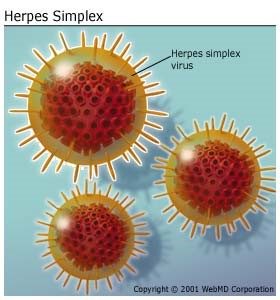Cold Sores HSV
What is a cold sore?
Despite their name, cold sores have nothing to do with the common cold. A cold sore or fever blister is a painful sore caused by an infection with the Herpes Simplex virus type-1. These sores can show up anywhere on your body, however commonly we relate them to outbreaks around the lips and mouth. You may notice them on the hands, fingers, and around the nose as well. The first indication of the virus is one or multiple blisters which burst after a few days and will ooze. Cold sores are highly contagious. It is extremely important not to touch these blisters, which causes them to spread not only on you, but can transfer to other people as well. The virus is transferred from saliva and skin-to-skin contact. This includes anything an infected person touches; towels, utensils, lip balm, hands, kissing, etc. It can take up to 20 days after contact for a blister to appear. The area of contact may feel itchy or sensitive 1 to 2 days before the blister appears. Once the oozing stops, they will form a yellow crust that will build up and fall off. This happens within 7-10 days from the time the blister(s) appear. Almost everyone, ninety percent, will have at least one cold sore in their life. Many times, your body will produce antibodies that prevent you from infections in the future. It is common to have the most severe symptoms the first time you are infected with the virus, and for children under 6 months of age to become seriously ill from the virus.

Photos courtesy of healthychildren.org
This can include a high fever, swollen glands and lymph nodes, sore throat and irritability to name a few. Help ease discomfort with cold smoothies and liquids, avoid acidic or spicy foods. Be sure to clean toys and bedding with hot water. Avoid kissing the child in order to control the spread of the virus, especially in children under 6 months of age. Their immune system isn’t as strong as an adult and complications can occur. Keep on eye on children to avoid scratching and picking of scabs as the blisters heal.


Approximately 40% of adults will have reoccurring infections throughout their lifetime. This happens because once you are infected, the virus settles into nerve cells within the body and lies dormant unless it is activated and brought to the skin’s surface. When the virus is reactivated, it usually appears in the same place as previous. There are environmental triggers that will stir up the virus and cause an outbreak. These can include:
Fever, cold or illness
Poor diet or dehydration
Sunburn or exposure to intense heat, cold or dryness
Stress and fatigue
Allergies and some food
Menstruation and/or fluctuating hormones
Injuries to or breaks in the skin
Unfortunately, there is no cure for cold sores. However, we can do our part to reduce the spreading of the virus by proper hand washing and taking all precautions during an outbreak. Keep your hands away from the sores and scabs, wash linens in hot water, and do not share cups or utensils. Avoid common triggers such as acidic foods, wear sunscreen, get enough rest and stay hydrated. Exercise regularly to reduce stress and anxiety. Maintain a well-balanced diet. Be sure to wear lip balm and zinc oxide containing sunscreen products when enjoying the outdoors. These cannot guarantee you will not have an outbreak, however taking good care of your body will ensure overall health.